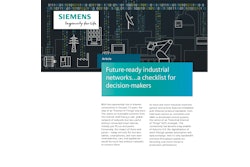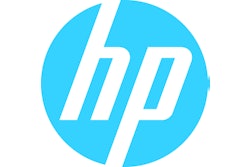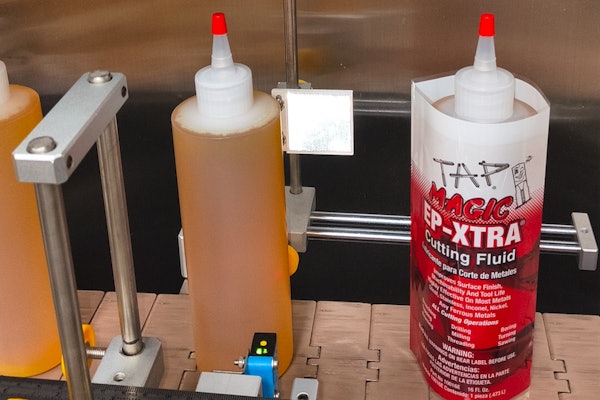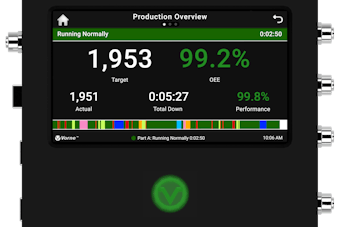The road ahead for radio-frequency identification is a promising one as indicated by market forecasts. For example:
• A new report from IDTechEx estimates that in 2006 almost three times the volume of RFID tags will be sold than over the previous 60 years since their invention with the global RFID market topping $7 billion in 2008. Primarily this will be driven by item-level RFID happening faster than people think often with fewer challenges than pallet or case-level tagging the report says.
• Frost & Sullivan released a report that retailers worldwide spent $400 million on RFID in 2004 and project that investment to be 10 times larger in 2011. Similar growth could be expected for consumer packaged goods (CPG) manufacturers that ship all those RFID tagged packages to retailers.
• The RFID market is expected to reach $4.7 billion worldwide by 2007 according to Venture Development Corp. growing by 42.8% over 2003.
However there is a more complex story behind the numbers one that’s influenced by factors including Generation 2 standards approval in late 2004 autumn 2005 price cuts on RFID inlays and tags and reader-antennas and retailers’ ongoing expansions into RFID. To better understand market dynamics we asked a number of experts (see sidebar) to share their insights about the status and challenges for RFID in the months ahead.
Gen 2 a higher standard
One of the keys to RFID’s present and future goes back one year ago this month: The long-anticipated ratification of the EPC Global UHF Generation 2 standard. Gen 2 paves the way for a new generation of technological benefits as a successor to previous standards and has its parallel in Europe as the International Organization for Standardization (ISO) 18000-6 standard.
“First of all Gen 2 is a standard one that forces vendors to reach at least a minimum of the specified requirements” explains RFID consultant Shahram Moradpour of Cleritec. “That in itself is good news though it doesn’t make the physics—the technical issues—of RFID go away. Engineers will still have to try and figure out how to increase read rates.”
Louis Sirico a consultant known as Mr. RFID served on the Gen 2 working group. He feels that the Gen 2 ratification is as big a boost psychologically as the technical advantages themselves. “Companies that have remained on the sidelines can no longer take a wait and see attitude about Gen 2 because it’s here” says Sirico. “Besides Gen 2 is pretty cool—there are a lot of technical advantages in the protocol that make it ideal for a number of applications.”
One of his favorite Gen 2 tag features is that they’re quiet: In environments with numerous tags a Gen 2 tag stays quiet unless it is instructed to respond. This makes it easier to search for a specific tag or type of tag in a ‘tag-dense environment.’ In a distribution center there can literally be thousands of tags in a single read field. Not only does this feature reduce the filtering workload of the middleware accuracy is drastically improved because only the tag(s) you want respond.”
The experts agree that Gen 2 hardware is going to provide better performance over Gen 1 hardware.
There are even more positives according to Sirico: “Companies will offer proprietary features on top of Gen 2 standards as part of their unique intellectual property to distinguish their hardware from the competition” he says. For example one vendor’s multiple antenna design would improve performance by essentially reading a standard tag as a dual-dipole tag. “That produces a longer read range and less orientation sensitivity” Sirico explains.
According to RFID authority Kevin Ashton ongoing improvements to read rates have been in addition to what Gen 2 offers. Ashton is formerly executive director of the Massachusetts Institute of Technology’s Auto-ID Center and is now vice president marketing for RFID reader vendor ThingMagic. He says users are becoming more sophisticated tag vendors provide higher quality products and reader manufacturers and their products are getting smarter too. “All these things will continue to improve” Ashton asserts.
Chantal Polsonetti a vice president with ARC Advisory Group consultancy says Gen 2’s most important role is its value as a global standard changing from what has largely been a United-States-centered view to a worldview. That means that a Gen 2 tag can be read anywhere globally. “I don’t need a different tag depending on where the case is being shipped in the world” she says. In an increasingly global economy that’s a fundamental benefit.
But what about the singular case of China and whether it will align with EPCglobal’s standards?
“We have analysts in China and we still get conflicting views on where that’s headed” Polsonetti admits. “Retailers and therefore packagers have a lot to gain to make sure China comes onboard with the global standard.”
Sirico doesn’t see China kowtowing to an external standard but feels instead that it will develop its own standards that align to EPCglobal so that it can interface with the rest of the world. “They have to” he says “the broad United States market is the number one consumer of their goods and Wal-Mart itself is number five.”
One thing that Gen 2 doesn’t do argues Polsonetti is to address return-on-investment issues. Fortunately the past few months have seen dramatic announcements made by RFID hardware vendors via price declines in tags and reader-antennas.
The new math of RFID ROI
The lower pricing is especially welcomed by those companies whose implementation has been the result of a mandate rather than internally driven implementation Polsonetti says. The latter presumably is justified because of payback or for reasons just as crucial. “For most companies involved in RFID it’s been ‘Wal-Mart made me do it yet I can’t make a payback doing it just for Wal-Mart’” says Polsonetti.
The price reductions aren’t just welcome they are huge according to Ashton: “There are other things you need to do besides buy tags but the moment you start scaling up deployment into the millions of units tags become the biggest component of your business case and of your costs. Reductions are clearly helpful and it gives people the confidence that cheaper tags aren’t just possible but available. For all those involved in RFID this really means you can tag more products and therefore have a better chance at return-on-investment.”
To Sirico the cost reductions represent the removal of another psychological barrier.
“These lower costs will reduce some perceived barriers to entry” says Sirico. “Many companies believe RFID implementation is too challenging or too expensive because of what they’ve read or heard. With prices one-half or one-third of what they have been RFID investments won’t require as much capital or companies can invest not only in Phase 1 but also Phase 2 and Phase 3 as well. Companies that six months ago calculated a 48 month payback on RFID implementation can now get 18 months payback and suddenly it’s worth doing that project.”
“When you tie these lower prices to the new products and services offered by software companies to help end-users make sense of their RFID data and to the recent spate of EPC Gen 2 announcements we may have a three-headed ‘benevolent monster’ that will promote demand” comments Erik Michielsen ABI Research’s director of RFID and ubiquitous networks. “What we are starting to see is lower-cost hardware tested and proven performance requirements around a new standard and software that enables nontechnology focused end-users to make better decisions and find ways to drive revenue growth and cost refinement. Altogether these factors support widespread RFID deployments across a wide range of vertical markets to a degree we have not seen before.”
“It’s great that the costs have come down” says Polsonetti “but that alone will not drive widespread installations. Where manufacturers are adopting it on their own because it solves a business problem that’s going to be a real ‘sweet spot’ for the technology.” She says RFID is used to solve problems beyond compliance offering as examples risk mitigation and issues surrounding theft and shrinkage.
While Moradpour acknowledges that lower pricing will hasten adoption he concurs with Polsonetti. He suggests that even the five-cent per tag benchmark won’t signal an RFID explosion.
“I’ve never thought that cost was the only barrier to getting widespread adoption of RFID” Moradpour says. “There are other issues that will remain primarily the re-architecturing of business processes. With RFID that’s an even bigger issue because large-scale adoption of RFID will need to be throughout the supply chain which is well-established and complex.”
Data management: The next step in RFID
One of the most common complaints by RFID users has been on the production side due to mediocre read rates. RFID users today are beyond much of that pain Polsonetti says.
“Overall rollouts involved a lot of pain on the physical layer of readers tags infrastructure and the ability to read those tags on cases and pallets” says Polsonetti. “Now with one year’s experience some companies are progressing from pilot to shipping to Wal-Mart for compliance to the next level. That is a strategic emphasis going forward on what they’re going to do with the data so there are data management issues as opposed to the physical layer issues.”
Polsonetti feels that’s where companies will be addressing RFID next: figuring out how to use that data. “Data management capability is the key to driving benefits with RFID” and she adds that it’s no coincidence that the “poster children” of RFID such as Gillette Hewlett-Packard and Kimberly-Clark among others are also the poster children of data management.
Data management is also a major challenge. A mid-sized company facing those issues is Cesar Castillo Inc. San Juan Puerto Rico a wholesale distributor of pharmaceutical products that launched an in-house item-level RFID program in summer 2005.
“It’s very hard to redesign traditional warehouse operations for RFID” says Dr. Rafael Moreno business development director. “Typically with warehouse systems your menus and screens and programs are all built around human-centered transactions. With RFID you have to throw away those transaction concepts to get the most benefit out of this technology. We have all made a huge commitment to previous technologies of bar coding and human-machine interfaces. RFID can automatically operate machine to machine conducting transactions on your behalf behind the scenes.
That represents a whole different ballgame. You need to think about your processes differently and design them differently. If you use the same process as before you won’t derive all the benefits of RFID. RFID is a disruptive technology you have to break away from and throw away some of your systems to reach its potential. RFID is not an extension of current technology it is outside the envelope.”
That’s holding companies back according to Polsonetti. “Numerous CPG companies are interested in this technology and see the potential but that hasn’t translated into execution.” Such companies already have sophisticated bar-code systems that provide supply chain visibility that RFID offers yet the incremental value proposition of RFID isn’t sufficient to merit the type of ubiquitous investment that “RFID everywhere” will provide she explains.
Polsonetti says that a good gauge for where a manufacturer resides on the spectrum of data management of RFID is what it is doing with inbound case tag data from its retailer customers.
“A lot of that data and even data from outbound tagged cases sits off-line in data warehouses” she explains. “It’s not integrated into demand-driven manufacturing.”
Key trends and predictions
Besides the technology-driven trends we’ve highlighted in sidebars others our experts say to look for include:
Higher-speed RFID commissioning stations as a move away from what Ashton calls “crude minimal slap-and-ship to something more realistic.” He singles out one recently announced vendor’s RFID station that pushes the speed of RFID encoding and application in the range of 100 units/min. “These are real-world speeds that match the velocity of the supply chain” Ashton notes. “As these kinds of bottlenecks are removed packagers start to see opportunities to derive more benefits from RFID.”
The demise of ‘slap-and-ship’ methods though that won’t happen “soon enough” says Sirico “but eventually it will have to because it creates bottlenecks within organizations. While it may be scalable it’s cost-prohibitive since it adds labor costs.” Sirico says there are clear downsides to having RFID tags or labels affixed manually to packages; one is inaccuracies in tag placement and orientation and the other is the combination of humans and static charges which can disable a tag.
RFID-enabled appliances that read the tags and adjust cooking conditions in the case of microwave ovens or for refrigerators inform users what products need replenishing. Those will be available in 2006 from companies in Korea and Germany.
"Cookie-cutter" RFID solutions that permit companies to expand their deployment using standard solutions that they can apply across their enterprise. “These would be reproducible RFID systems that don’t demand a lot of fine tuning” Ashton says.
Conductive inks—“The use of conductive inks can help to reduce costs” says Sirico.
“These kinds of inks are most promising as antennas and would be ideally suited for printing onto corrugated” adds Polsonetti.
“They’re real—we’ve tested them” states Ashton “and though they’re not as good as copper tags they’re cheaper.”
Privacy is seen as a potential dark cloud to RFID’s silver lining while others dismiss it out of hand. But Moradpour is not one of them. “I see privacy as one of the factors that looms larger than the technical barriers” he says. For a new and expanded look at this issue with some of our experts see Psst: The privacy world of RFID.
Prepare for more RFID
As those market research forecasts predict our experts also feel that 2006 will continue the growth RFID has experienced.
“RFID adoption will grow exponentially” predicts Siroco who bases his projection as much on people as on mandates and technology. He says if there were 1 RFID champions within 1 companies in 2005 soon there will be 10 such champions.
Retailers are making their reader-antenna selections now and will then place orders and then install in Q1and Q2 2006 Sirico says. The effect on packagers will follow: “Once this added RFID infrastructure is in place retailers will say ‘we’re ready send us more RFID-tagged goods’.” Sirico says.
Polsonetti sees the last frontier of supply chain visibility in retailers’ stores. “RFID can provide product visibility in the store if companies want it” she says.
If Wal-Mart is any indication they do want it. In October Wal-Mart announced details of an independent study that showed over a 29-week period that out-of-stock products were reduced by 16% at 12 RFID-equipped stores. Having product available on-shelf for consumers is what RFID for Wal-Mart is all about. “We are not stopping there” says Linda Dillman Wal-Mart’s chief information officer. “This is only one of many changes that RFID will bring.”
RFID is a sign of things to come at Wal-Mart and elsewhere and more RFID for retailers means more RFID for CPGs and throughout their supply chains.
Because technology adheres to no dateline 2005 and 2006 are really part of a continuum of growth in RFID. As Ashton likes to say “We’re in the decade of RFID not the year of RFID.”
Eitherway let’s toast a successful one.
See sidebar to this article: Tech trend: RFID sensors
See sidebar to this article: Tech trend: Forklift-enabled RFID
See sidebar to this article: Tech trend: Embedded tags
See sidebar to this article: The experts
























